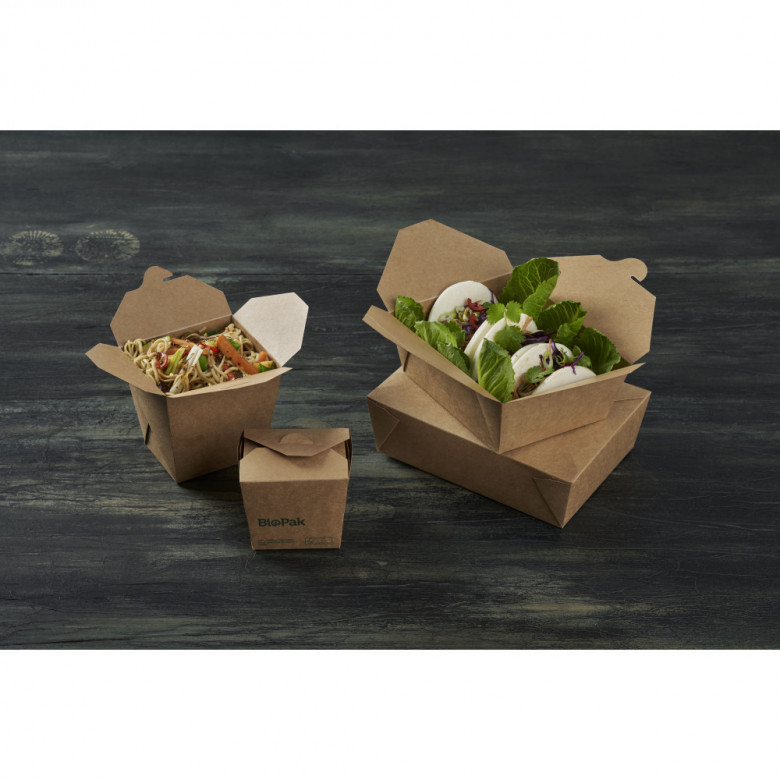views
Food Delivery Services Market Forecast
Introduction
The food delivery services market has experienced rapid growth, driven by convenience, digitalization, and changing consumer lifestyles. However, this expansion has also raised concerns about environmental sustainability due to excessive packaging waste and carbon emissions. As consumers become more eco-conscious, the demand for sustainable packaging and eco-friendly delivery practices is shaping the industry's future. This article explores the forecast for sustainable innovations in food delivery and how companies are adapting to greener alternatives.

Growing Demand for Sustainability in Food Delivery
With rising environmental awareness, consumers and businesses alike are focusing on reducing their carbon footprint. Key drivers influencing sustainability in the food delivery services market include:
-
Regulatory Pressures: Governments worldwide are implementing strict regulations against single-use plastics and encouraging biodegradable materials.
-
Consumer Preferences: A growing number of customers prefer brands that prioritize eco-friendly practices.
-
Corporate Sustainability Goals: Many food delivery companies are integrating sustainability into their business models to align with global environmental targets.
-
Technological Innovations: Advancements in sustainable packaging materials and carbon-neutral delivery options are making green practices more viable.
Future Trends in Sustainable Packaging
The shift towards sustainable packaging is one of the most crucial aspects of the evolving food delivery services market. Some of the most prominent trends include:
1. Biodegradable and Compostable Packaging
Traditional plastic containers are being replaced with compostable alternatives made from materials like cornstarch, sugarcane bagasse, and bamboo. These materials break down naturally, reducing landfill waste and pollution.
2. Edible Packaging
Edible packaging is an innovative solution where food items are wrapped in consumable materials such as seaweed or rice paper. This eliminates waste altogether and adds a unique selling point for businesses.
3. Recyclable and Reusable Packaging
Many food delivery services are investing in packaging that can be easily recycled or reused. Companies like Loop and DeliverZero provide returnable containers, reducing single-use waste.
4. Minimalist Packaging
Reducing excess packaging and unnecessary wrapping is another key trend. Brands are opting for simple, functional designs that minimize waste without compromising food safety.
Eco-Friendly Delivery Practices
Beyond packaging, companies in the food delivery services market are also exploring green delivery methods to cut down on carbon emissions. Some of the most impactful eco-friendly delivery practices include:
1. Electric and Hybrid Vehicles
Major food delivery platforms are transitioning their fleets to electric vehicles (EVs) and hybrid models to reduce fuel consumption and greenhouse gas emissions.
2. Bicycle and Pedestrian Delivery Services
Many urban delivery services now rely on bicycles and foot couriers to minimize emissions and traffic congestion, especially in high-density cities.
3. Carbon Offsetting Programs
Several food delivery companies have introduced carbon offset initiatives, where they invest in reforestation and renewable energy projects to neutralize their environmental impact.
4. AI and Smart Routing for Efficiency
Artificial intelligence and machine learning are being used to optimize delivery routes, reducing fuel usage and enhancing efficiency. Smart routing systems help couriers find the shortest, most sustainable paths to customers.
Industry Leaders in Sustainable Food Delivery
Several food delivery giants are taking proactive steps towards sustainability:
-
Uber Eats & DoorDash: These platforms have introduced initiatives promoting reusable packaging and carbon-neutral delivery options.
-
Just Eat & Deliveroo: Partnering with eco-friendly packaging suppliers, they are encouraging restaurants to adopt green materials.
-
Zomato & Swiggy: These brands are exploring electric vehicle adoption and sustainable cutlery options to minimize plastic waste.
Challenges in Implementing Sustainability
Despite the push for sustainable packaging and eco-friendly delivery practices, the industry faces several challenges:
-
Higher Costs: Eco-friendly materials and green delivery solutions are often more expensive than conventional options.
-
Consumer Compliance: Not all customers are willing to pay extra for sustainable packaging or participate in returnable packaging programs.
-
Logistical Issues: Managing reusable packaging systems and electric delivery fleets requires significant operational changes.
-
Regulatory Variability: Different regions have different laws regarding packaging and emissions, making it difficult for global brands to standardize sustainability practices.
The Future of Sustainability in Food Delivery
The future of sustainability in the food delivery services market looks promising as technological advancements and consumer preferences drive innovation. Some key future developments include:
-
Advanced Bioplastics: Research in biodegradable plastics made from algae and fungi could provide cost-effective, sustainable alternatives.
-
Blockchain for Transparency: Blockchain technology could improve supply chain transparency, ensuring sustainable sourcing and ethical food production.
-
Subscription-Based Packaging Models: More companies may adopt reusable packaging subscription models to encourage sustainability among consumers.
-
AI-Powered Demand Forecasting: Using AI to predict demand patterns can help reduce food and packaging waste.
Conclusion
The food delivery services market is undergoing a significant transformation towards sustainability, with sustainable packaging and eco-friendly delivery practices playing a critical role. While challenges remain, businesses that embrace green initiatives will not only help the environment but also attract eco-conscious consumers and gain a competitive edge. As innovation continues, the industry is set to become more sustainable, reducing its impact on the planet while meeting the growing demand for convenience.






















Comments
0 comment